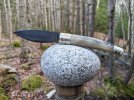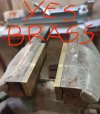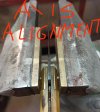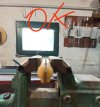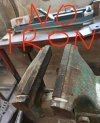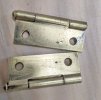waynorth
Knifemaker / Craftsman / Service Provider
- Joined
- Nov 19, 2005
- Messages
- 33,169
Very nice collection, Ray!!Here is my EURO HORN collection - only 2 are Sardinian but they are all traditional and I don't think you folks will mind my mixing up the group, off thread a bit. Per the oiling discussion a few days ago, I gave these all some olive oil.Just precautionary though I have never noticed any horn creep or shrinkage. The pivot pins of the friction folders need tapping once each year but otherwise all good! I love this little group.
Top to bottom ~
• Gigi Sechi
• Davide Steri (this is the big brother towaynorth 's knife above
• Jerome Latreille - Mammoth Tusk
• Little Antique “yataghan” type, made by Charpentier
• Pierre Yves Joyeux
View attachment 2011028
I see that I have a dark handle theme going here - mostly. Time to change that up.
Will discuss a lighter more luminous horn for my next Sardinian.
View attachment 2011030




